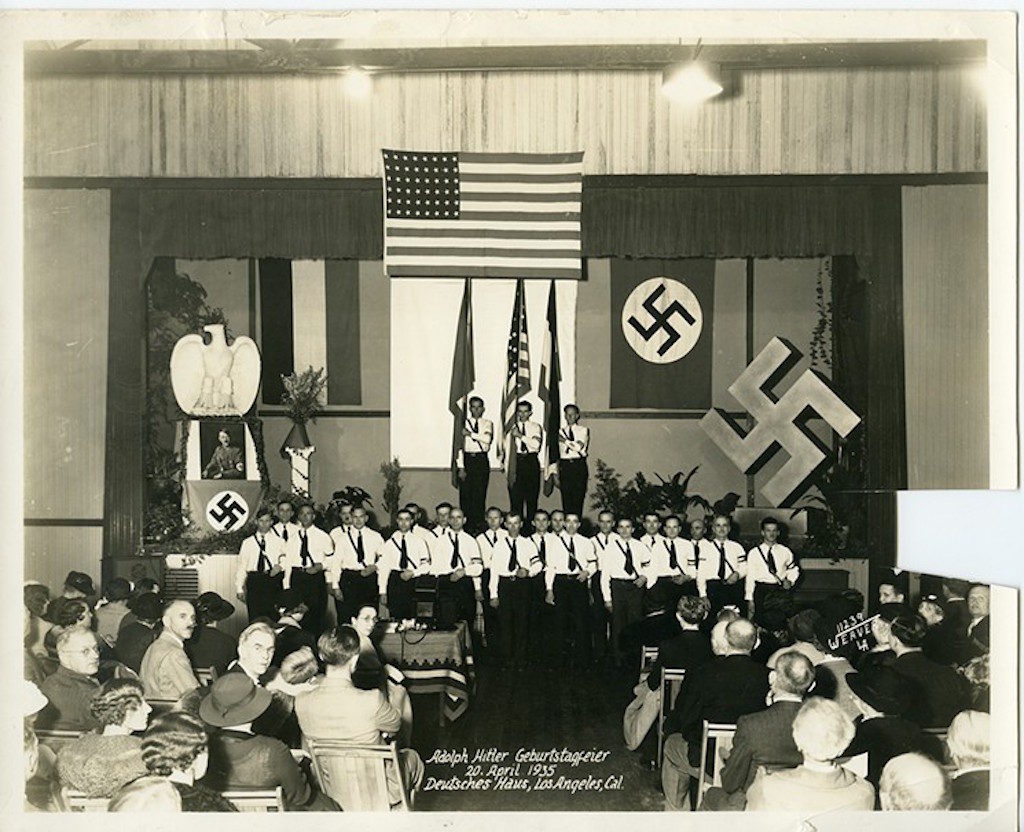 Photo Essay
Photo Essay
Nazis in Los Angeles
Liesl Bradner / Truthdig March 6, 2018 13 photos-
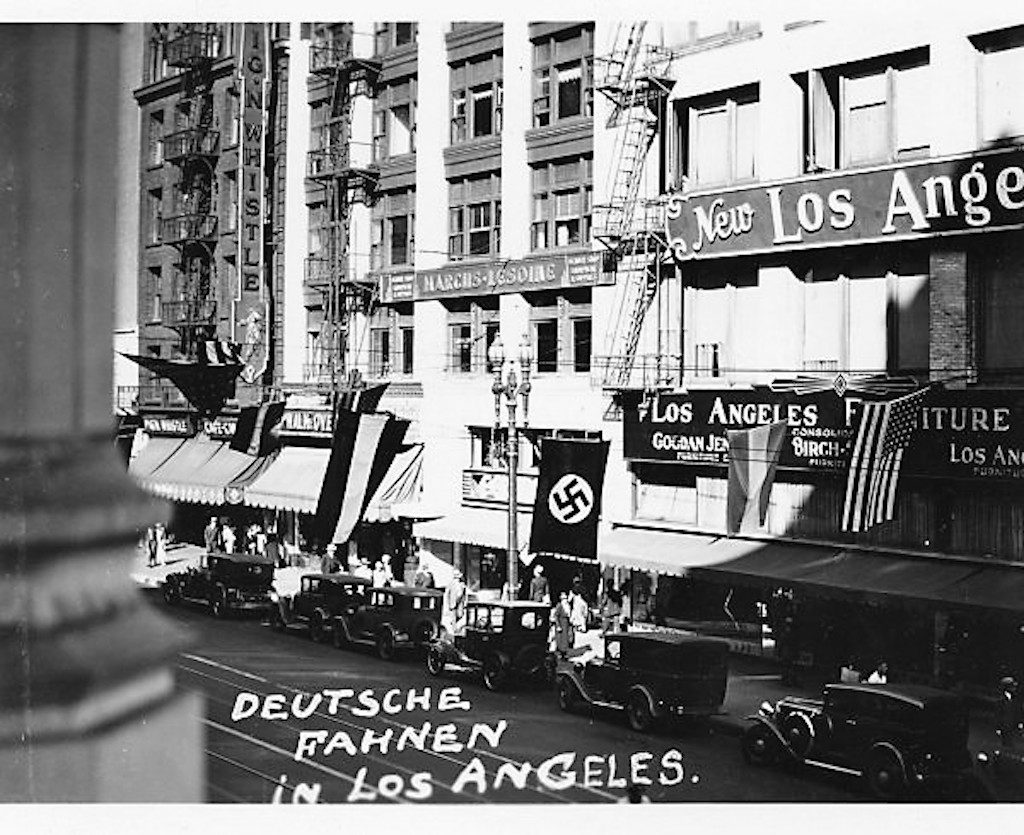
Nazi symbols could be spotted all over downtown Los Angeles in the 1930s. Here, in 1936, a swastika hangs next to an American flag outside a furniture store on the 200 block of South Broadway. (Steve Ross / Delmar T. Oviatt Library, California State University, Northridge)
-
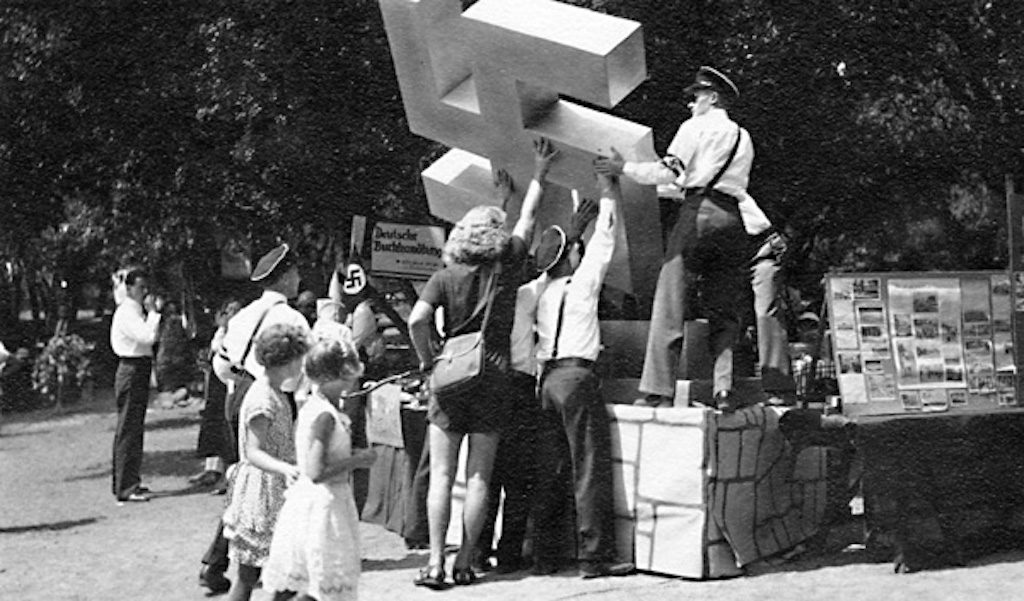
This photo of the raising of a swastika sculpture was part of a 1936 German Day celebration in Los Angeles’ Hindenburg Park (in Crescenta Valley Community Regional Park). Neill Ness, a World War I veteran who studied engineering in Berlin, took the photo. He was one of Leon Lewis’ top spies and wandered freely at many of the German American Bund’s community events. (National Archives)
-
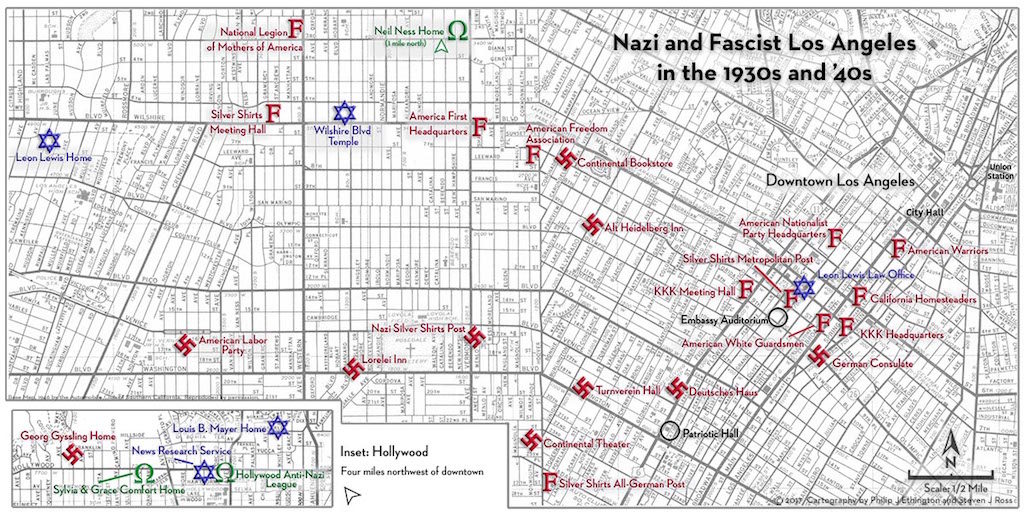
A map of Nazi and fascist hangouts and homes in Los Angeles during the 1930s and 1940s. (Cartography by Philip Ethington and Steven Ross)
-
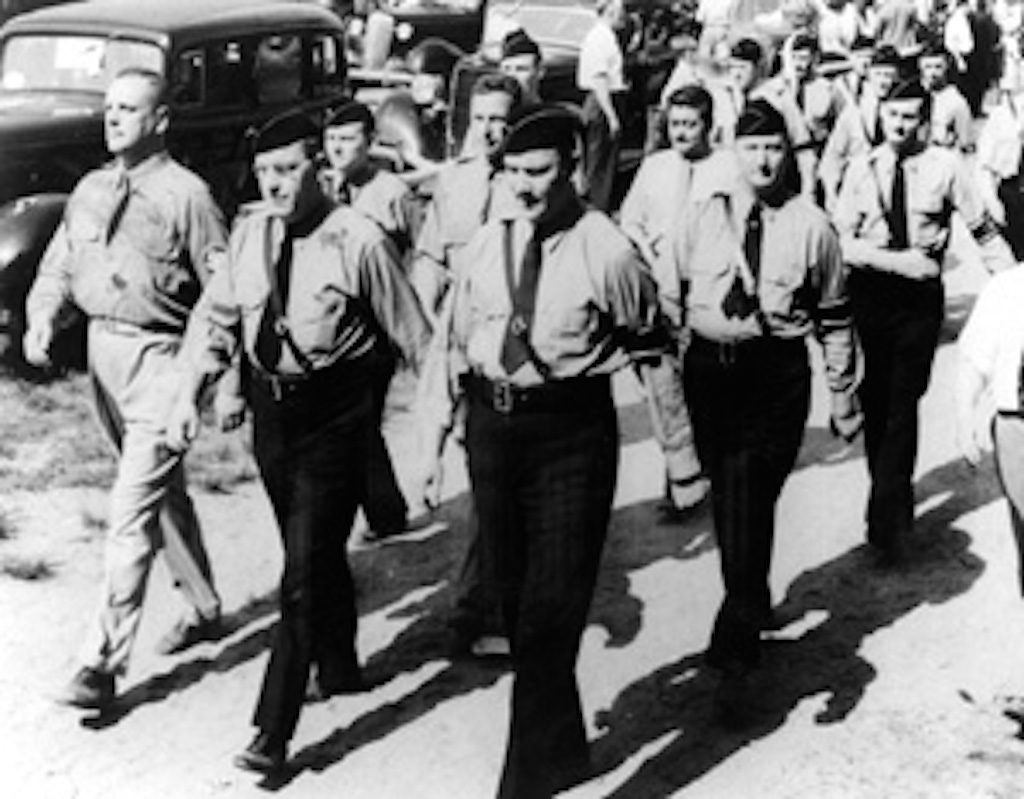
Nazi stormtroopers march in Hindenburg Park in September 1936. The park gained infamy when the Nazi Party was the ruling power in Germany and the American arm of the Nazis, the German American Bund, with giant swastikas and German military-style uniforms, staged rallies there. (Delmar T. Oviatt Library, California State University, Northridge)
-
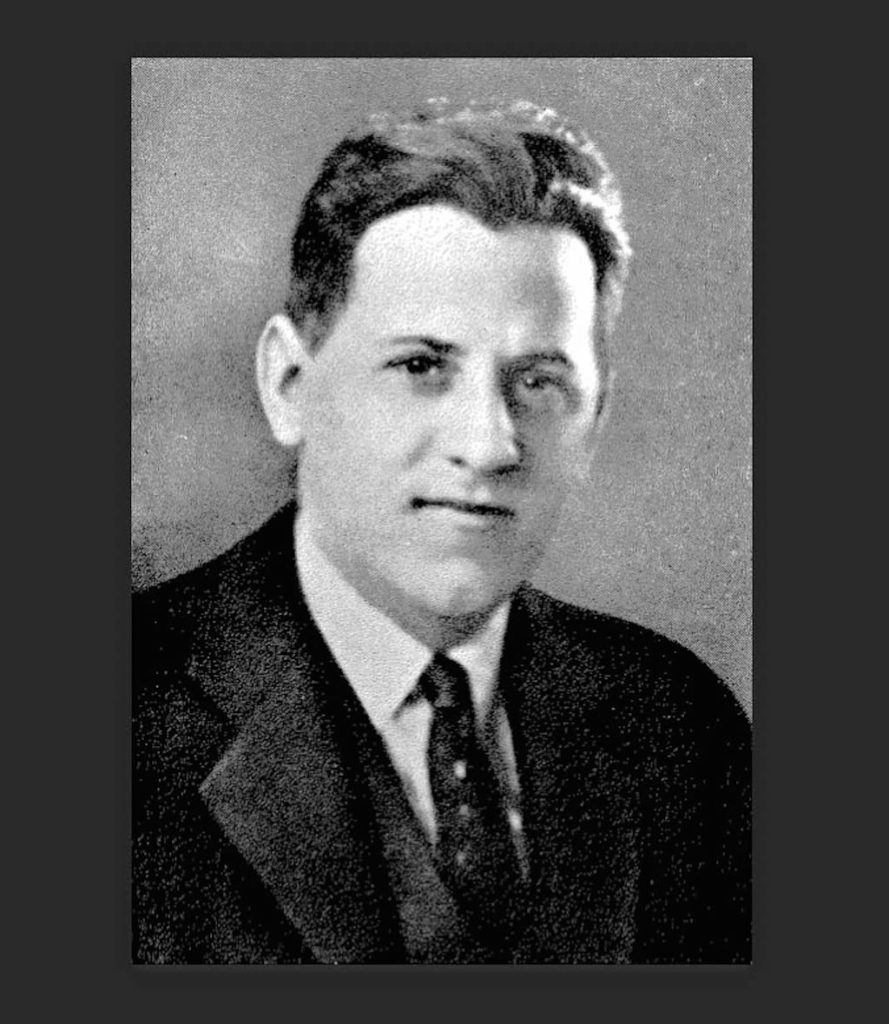
Leon Lewis was an unassuming Jewish lawyer who had served in World War I and was the former executive director of the Anti-Defamation League. The Nazis called him “the most dangerous Jew in Los Angeles.” Frustrated by too much talk and little action from Jewish groups, Lewis began secretly recruiting a small group of WWI veterans to spy on Nazis and anti-American organizations. (Delmar T. Oviatt Library, California State University, Northridge)
-
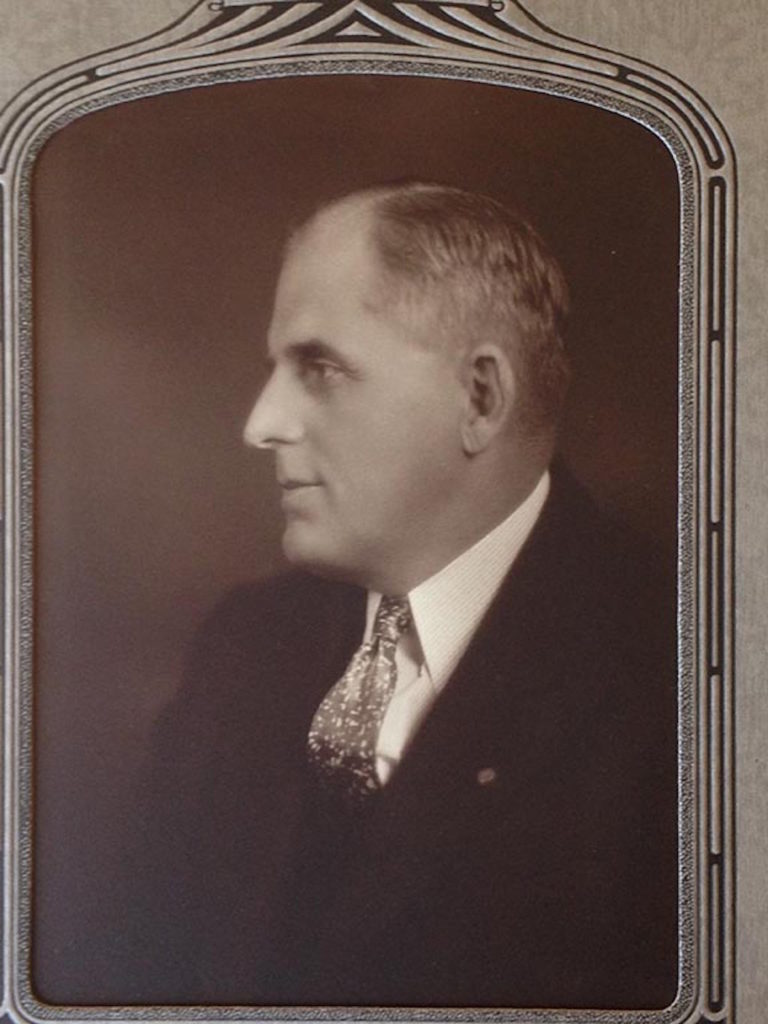
Capt. John Schmidt was Lewis’ first spy. Born in Germany, the former Imperial Army cadet also served as a U.S. Army captain in World War I. Naturalized citizens, Schmidt and his wife, Alice, posed as a German-American couple sympathetic to the Nazi cause. Their mission: to infiltrate and root out every Nazi, fascist and un-American group. (University of Southern California Library Special Collection)
-
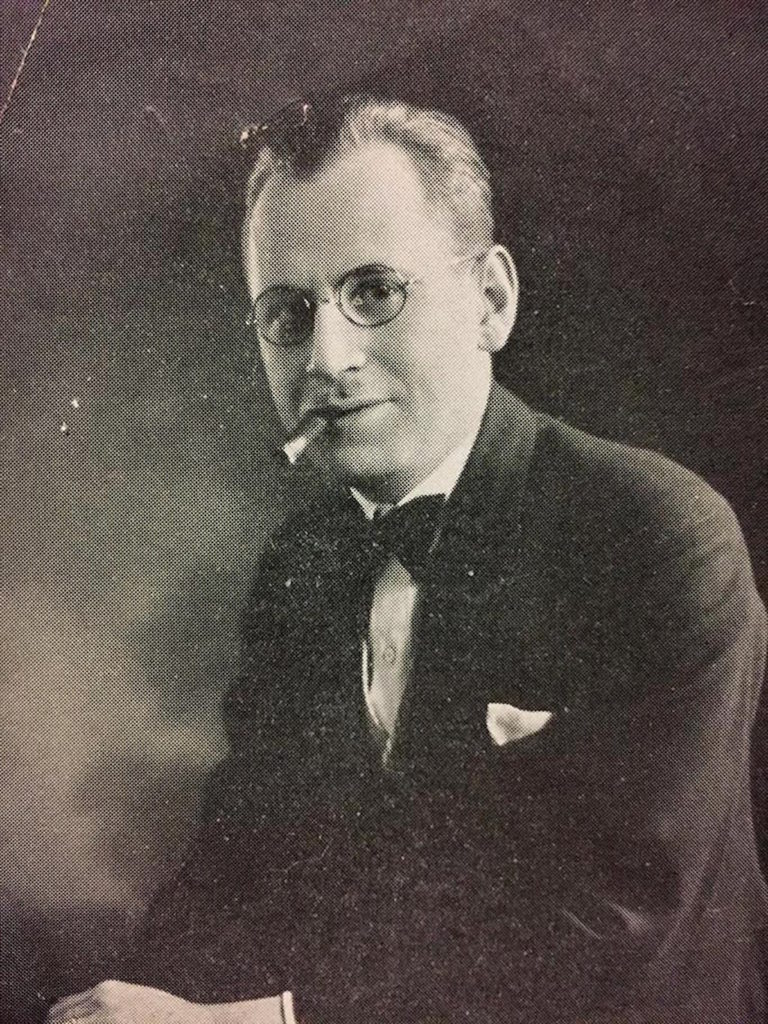
Julius Klein, uncle of associate spymaster Joseph Roos, sent undercover reports of Nazis’ movements regularly to Gen. George Marshall in Washington, D.C. (Unknown)
-
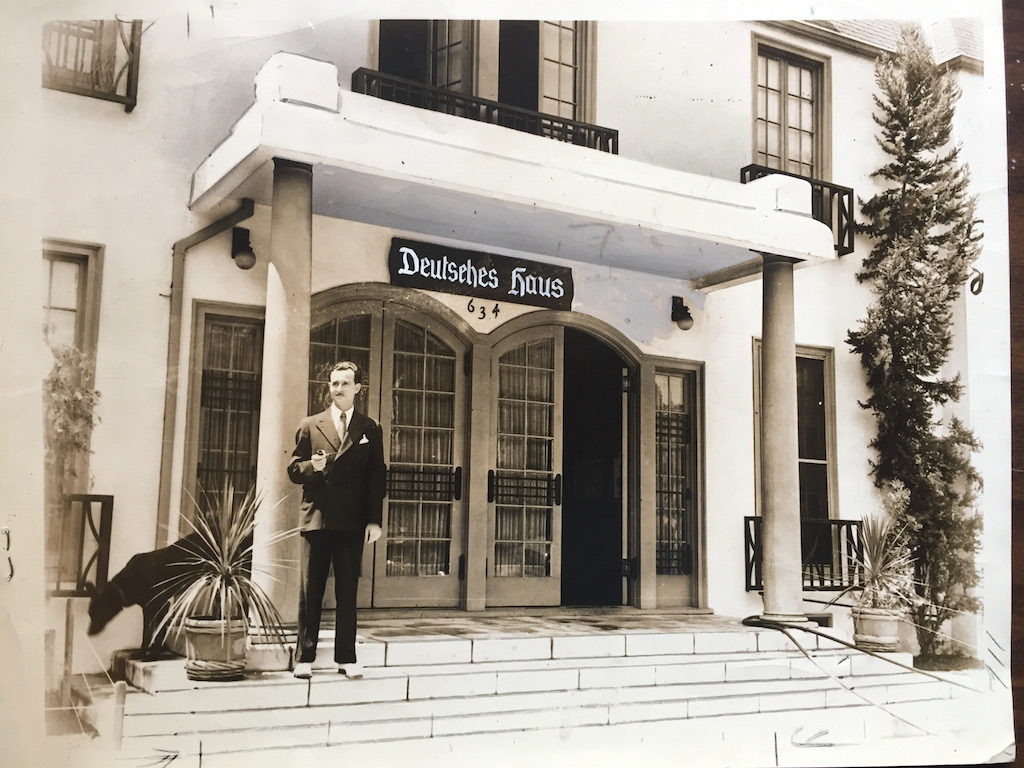
Herman Schwinn, West Coast leader of the German American Bund from 1934 to 1941, and his dog outside the Deutsches Haus—or German House—Tavern. The establishment was located at 634 W. 15th St. and was closely associated with the Bund. (Delmar T. Oviatt Library, California State University, Northridge)
-

A German American Bund meeting on April 20, 1935, (Adolf Hitler’s 47th birthday) at the Deutsches Haus in Los Angeles. (CRC papers)
-
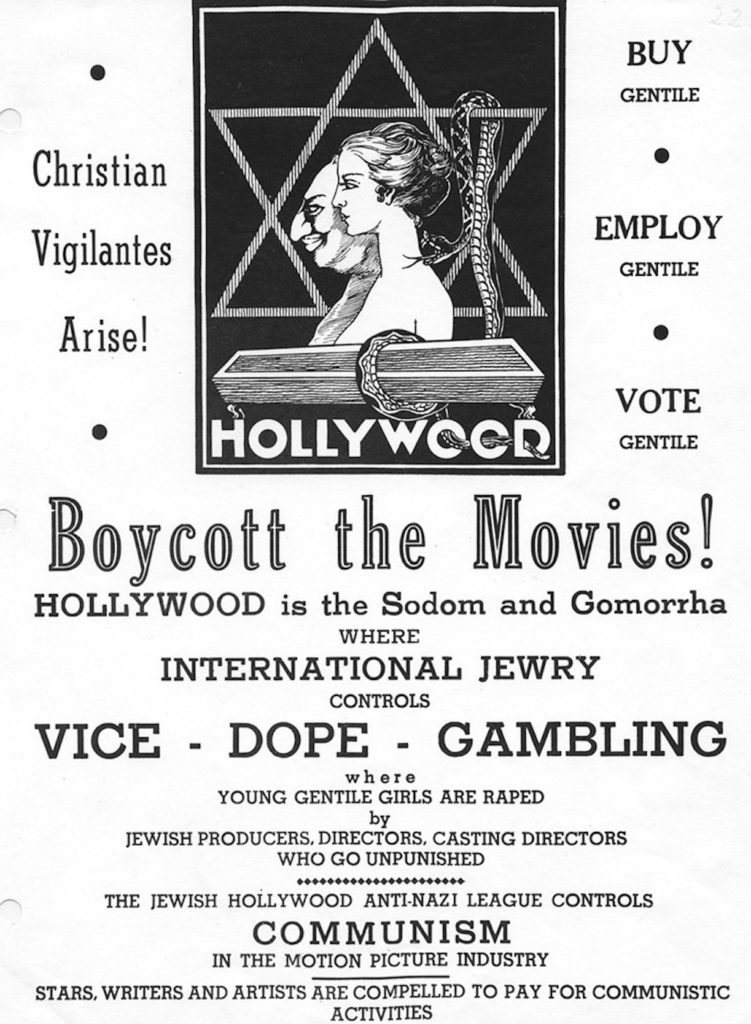
An anti-Hollywood handbill boycotting movies was plastered across Los Angeles using the “snowstorming” propaganda method. A few men from the German American Bund and Silver Shirts would sneak onto the roofs of downtown buildings and release the flyers for maximum impact, allowing them to reach hundreds of Angelenos. (CRC papers)
-
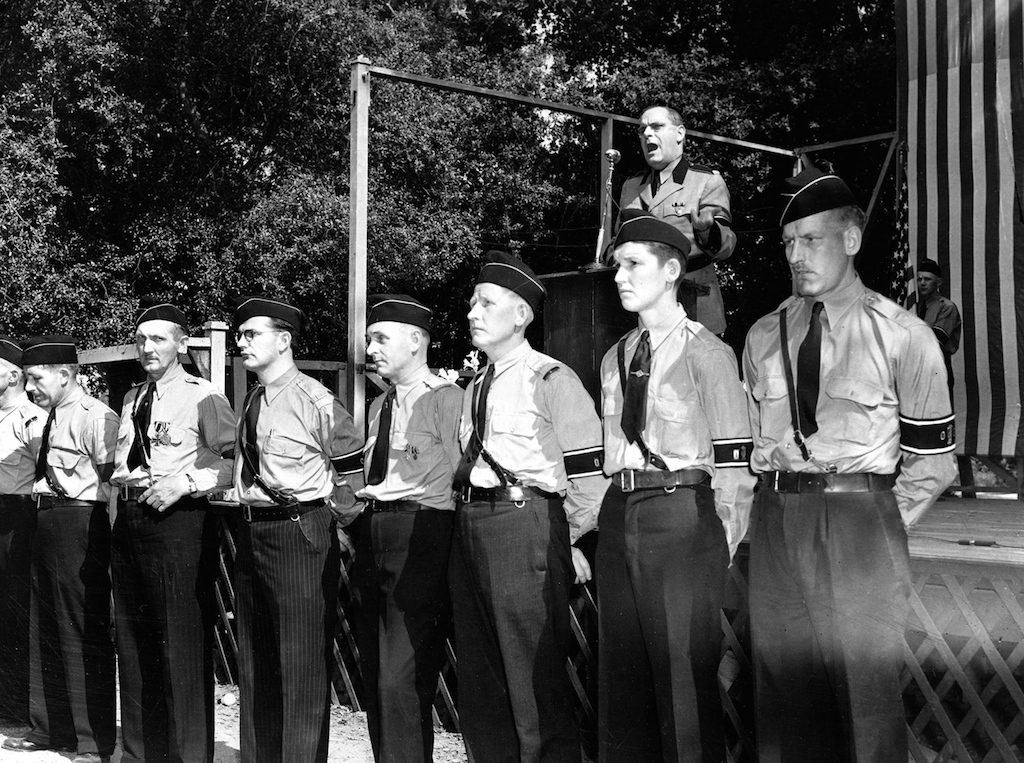
National German American Bund leader Fritz Kuhn addresses a crowd at Hindenburg Park near Los Angeles on April 30, 1939. (AP)
-
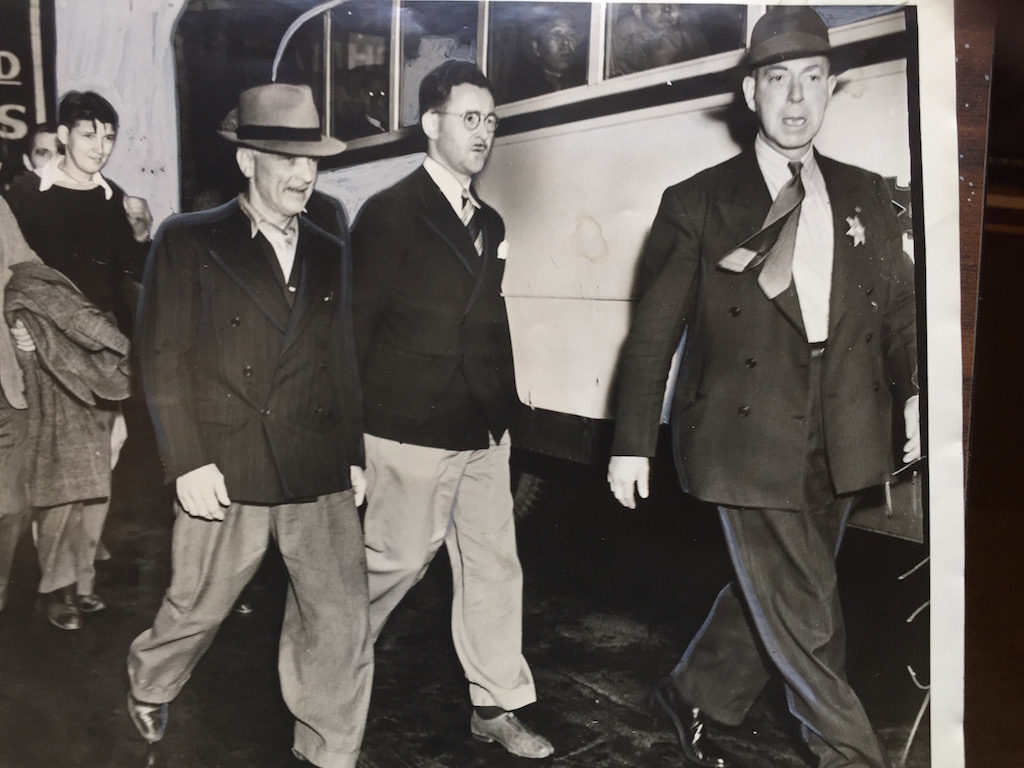
Hermann Schwinn, chief of the West Coast German American Bund, is arrested by the FBI in a post-Pearl Harbor roundup on Dec. 9, 1941. American citizens, as well as resident Germans, now were considered enemy aliens. Some were jailed, sent to internment camps or exiled. (International News Photo)
-
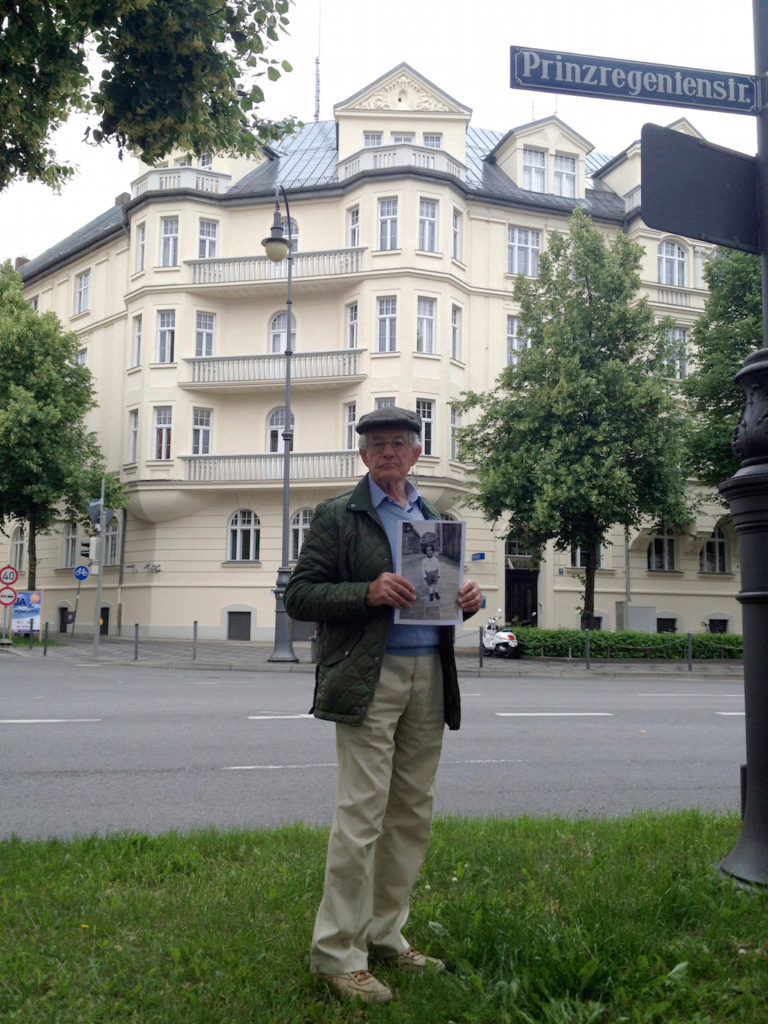
An elderly Edgar Feuchtwanger stands in front of Adolf Hitler’s former flat, across the street from his childhood home of the 1930s. This photo was taken in 2012, when Feuchtwanger returned to Munich for the first time since being sent to England in 1939. (Other Press)